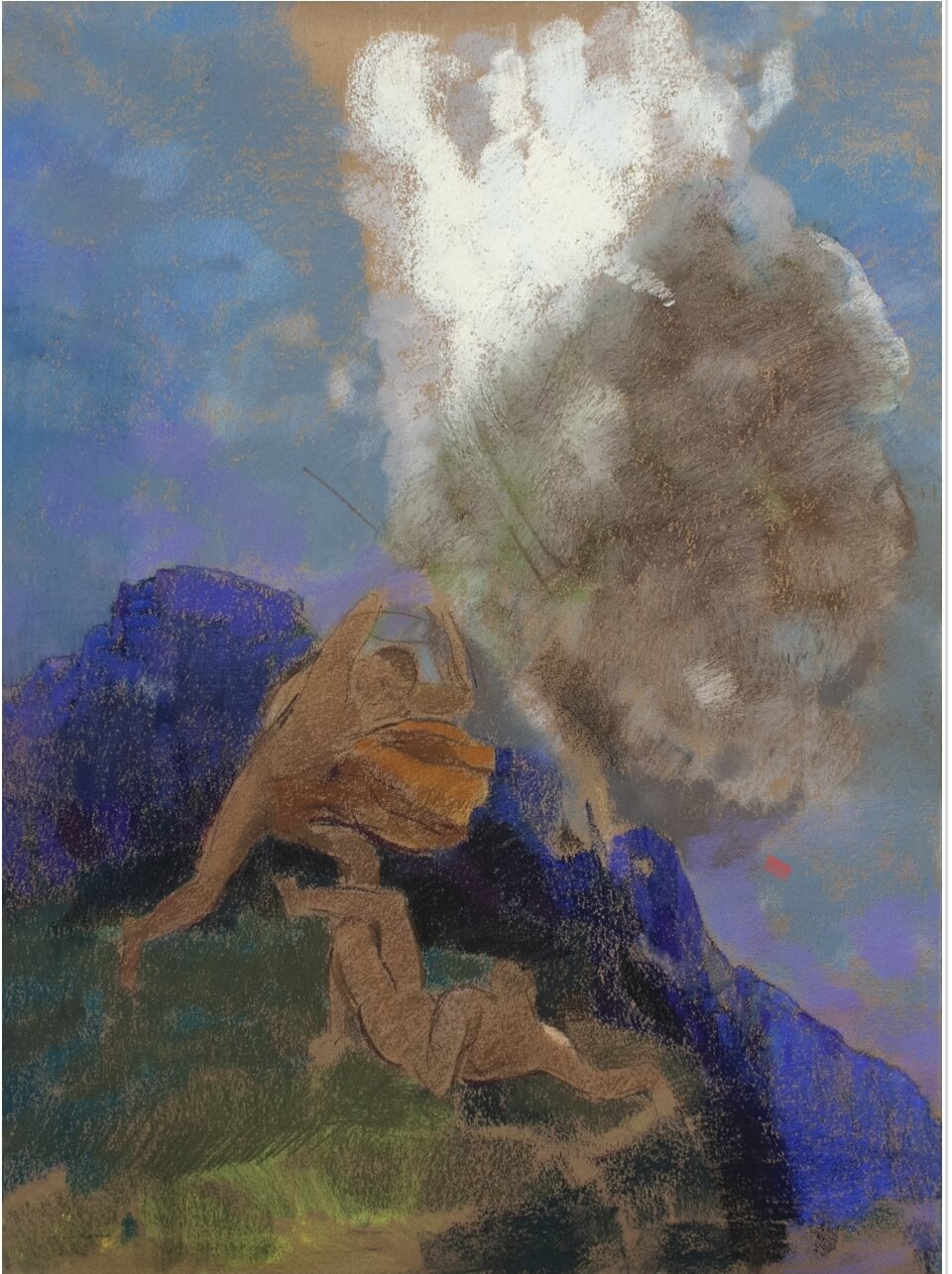
Odilon Redon
Caïn et Abel
Pastel on Bistre paper
80 x 60 cm. (31 1/2 x 23.6 in.)
Courtesy of Helly Nahmad Gallery, New York
The incandescent blue fantasies of Odilon Redon are rooted in poetry. The original textual basis of Cain and Abel is obvious, but Redon draws his mystical blues from the deeper fathoms of French poetry, particularly Stephane Mallarme’s “l’azur,” the single most meaningful color for all the Symbolists. When J K. Huysmans included Redon by name in his decadent novel Against the Grain, this supremely talented but difficult-to-categorize artist from Bordeaux, whose early work had been included in exhibitions of the Impressionists, was catapulted into literary renown. By the end of this career, his disturbing paintings of eyes as colossal hot-air balloons made him a bridge to Surrealism. What makes Redon’s blue so important? By turning up the volume using the purest pigment (pastel is ground pigment with a binder) he liberates color, as did Matisse, to act as a light source. In his own words, the medium leads the way: “Materials have secrets to reveal; they have their own genius; it is through them that the oracle speaks.” Just in terms of the studio world of nineteenth-century Paris, Redon’s career began in the period of “violetomania” (the Societe Anonyme which Monet, Manet, Cezanne and Pissarro founded in 1874 was known for “always proceeding from a violet and bluish range”) and proceeded to the cooler, purer versions that became his signature in later years.
Like the cobalt with which the stained glass of French cathedrals was made, Redon’s radiant clouds of blue tap a wealth of allegorical associations with a long European history.
#NCMAblueperiod